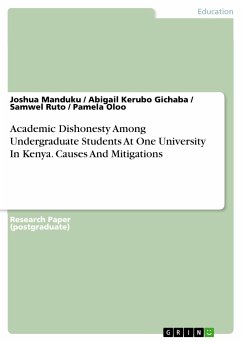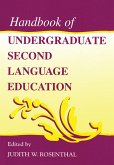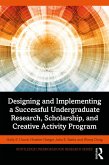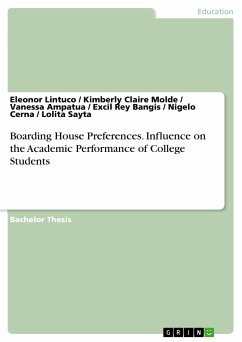Research Paper (postgraduate) from the year 2021 in the subject Education - Educational Tests & Measurements, University of Kabianga (School Of Education), course: Educational Management, language: English, abstract: Recent empirical studies indicate that cheating by college students is prevalent in many countries. More is known about the pervasiveness of college cheating than reasons why students cheat and how the vice can be mitigated. This article presents findings of a study that attempted to explore academic dishonesty among undergraduate students at One University in Kenya. The study employed stratified random sampling technique to obtain 200 student respondents from the Main and the Town campuses of One University in Kenya. The strata were the various schools/faculties at the University. The study was conducted between the months of June and July in 2017. Grounded on the Theory of Reasoned Action, the study focused on establishing the methods used by students in cheating in examinations, the reasons as to why the students cheat in examinations and suggesting ways in which this vice can be minimized. Data were collected by the use of a students' questionnaire. Partial least squares methodology was used to analyze the responses of students.
Dieser Download kann aus rechtlichen Gründen nur mit Rechnungsadresse in A, B, BG, CY, CZ, D, DK, EW, E, FIN, F, GR, HR, H, IRL, I, LT, L, LR, M, NL, PL, P, R, S, SLO, SK ausgeliefert werden.









